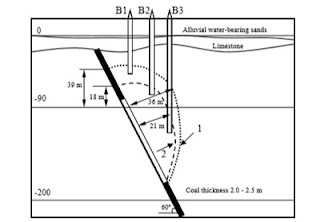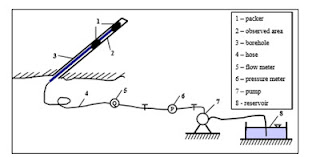It is perhaps remarkable to find that, although rock and cable bolts have been used in underground mining and construction for several decades (if not more than 100 years in the case of rock bolts), bolt elements and bolting systems continue to evolve and improve. The papers presented to this symposium detail advances made in fully encapsulated resin and cement grouted bolts (Mikula 2004, Mould et al. 2004, Neindorf 2004), one pass mechanized bolting (Mikula 2004, Neindorf 2004) and bulbed cables (Yumlu & Bawden 2004), for example.

The developments in ground support practices that have accompanied greater productivity, larger excavations and larger equipment are especially well-illustrated in the paper by Neindorf (2004) describing the evolution of ground support practices at the Mount Isa mine over the past 30 years.
In a detailed and valuable review paper, Windsor (2004) concludes that “the quality and performance of cable bolts used to stabilise temporary, non-entry, production excavations have improved over the last 20 years to the point where they are now an essential part of modern mining practice. Cable bolts have provided the industry with increased production, increased safety and increased flexibility in the extraction process.
However, with the development of wider span haulage and other larger mine openings, cable bolts are now also used to secure longer life, infrastructure excavations.” Windsor (2004) recommends “that greater care and attention to detail be invested during selection and installation of cable bolts for mine infrastructure excavations than that given to mine production excavations”. He identifies, in particular, the importance of the control of the geometry, material quality, installation and testing of the barrel and wedge fittings used as cable grips.
It is also important to recognize that the use and effectiveness of rock and cable bolts in Australia’s underground coal mines have developed considerably in the recent past. Hebblewhite et al. (2004) suggest that the significant trends over the last decade have included:
- use of longer bolts;
- use of partial and predominantly full-encapsulation, polyester resin anchored bolts;
- use of threaded bolt fixing systems;
- adoption of bolt pre-tensioning in an increasing number of applications;
- adoption of different grades of steel to achieve stiffer and stronger bolts; and
- variations to bolt deform patterns and ribbing systems for improved anchorage and load transfer performance.
An issue that has long existed, but has often been over-looked, is the corrosion resistance and longevity of rock and cable bolts. The initial Snowy Mountains installations which are generally regarded as having pioneered the systematic use of rock bolting in Australia (e.g. Brown 1999b) are now more than 50 years old. It was inevitable, therefore, that this issue would assume the increasing importance accorded it by the papers presented to this symposium (e.g. Bertuzzi 2004, Hassell et al. 2004, Hebblewhite et al. 2004, Satola & Aromaa 2004, Windsor 2004). As noted by Hassell et al. (2004) and Potvin & Nedin (2004), the long-term corrosion resistance of the popular friction rock stabilizers, remains an issue. Corrosion protection is one of the advantages offered by fully encapsulated bolts and cables.
However, there are suggestions that cement grouting alone does not provide long-term (e.g. 100 year) corrosion protection (Bertuzzi 2004). For long-term protection, two independent corrosion barriers are usually required. Depending on the atmosphere and the mineralogy and groundwater conditions in the rock mass, corrosion may also affect surface fixtures such as plates and nuts as well as the bolts and cables themselves. Of course, galvanizing provides protection to the steel underneath but not necessarily for long periods of time (Hassell et al. 2004, Windsor 2004).
Interestingly, in a detailed inspection of 50 km of 35–40 year old tunnels in the Snowy Mountains Scheme, Rosin & Sundaram (2003) found the mainly fully cement grouted, hollow core mild steel bolts to be in excellent condition, showing little evidence of corrosion. An approximately 5 mm protective grout or bitumen coating applied to the bolt threads and face plates appeared to have worked very well. Carefully controlled installation and grouting is a necessary pre-condition for the achievement of such performance (Windsor 2004).
With increasing knowledge, experience and the availability of a range of analytical and numerical tools, rock and cable bolt installations are now being designed for increasingly demanding operational conditions in both civil engineering and underground mining. However, the most successful installations are usually those whose performance is monitored by a well-designed instrumentation system as part of a systematic observational approach (e.g. Moosavi et al. 2004, Thibodeau 2004, Thin et al. 2004, Tyler & Werner 2004, Yumlu & Bawden, 2004).
Shotcrete
Over the last decade, increasing use has been made of shotcrete for ground support and control in infrastructure, development and production excavations in underground mines in Australia and elsewhere. Clements (2003) reports that nearly 100,000 m3 of shotcrete is applied annually in some 20 underground mines in Australia. Advances have been made in mix design, testing, spraying technology and admixtures which have combined to improve the effectiveness of shotcrete. Wet-mix fibre-reinforced shotcrete is now the industry standard.
Of course, shotcrete has long been an essential part of support and reinforcement systems in underground civil construction where its use is well-established even for softer ground than that commonly met in underground mining (Kovari 2001). In underground mining, shotcrete is now used to good effect not only for infrastructure excavations, in weak ground (e.g. Yumlu & Bawden, 2004), for rehabilitation, and in heavy static or pseudo-static loading conditions (e.g. Tyler & Werner 2004), but as a component of support and reinforcement systems for dynamic or rockburst conditions (e.g. Li et al. 2003, 2004).
The toughness or energy absorbing capacity of fibre-reinforced shotcrete is particularly important in this application. A new toughness standard, the Round Determinate Panel test, has been developed in Australia and adopted in some other countries (Bernard 2000, 2003). The performance of fibre-reinforced shotcrete measured in these tests can vary significantly with the type (usually steel or polypropylene structural synthetic fibres) and dosage of fibres used.
Mesh and sprayed liners
Another important change in support and reinforcement practice in underground mining in recent years has been the increasing emphasis being placed on mesh and sprayed liners of several types as a primary ground control mechanism. Although, because of the large quantities used and its importance as a support technique, shotcrete has been treated here as a special category of support, it is often included with other techniques in the class of spray-on liners (e.g. Spearing & Hague 2003). The overall subject of mesh and sprayed liners has become so significant that it now has its own series of specialist international meetings.
In some mining districts such as those in Western Australia and Ontario, Canada, mining regulations and codes of practice now require that some form of surface support, usually mesh, be used in all personnel entry excavations. In Western Australia, the Code of Practice applies to all headings that are higher than 3.5 m and requires that surface support be installed down to at least 3.5 m from the floor (Mines Occupational Safety and Health Advisory Board 1999). These provisions form part of the steps being taken to understand and alleviate the rockfall hazard in Western Australia’s, and Australia’s, underground metalliferous mines (Lang & Stubley 2004, Potvin & Nedin 2004).









